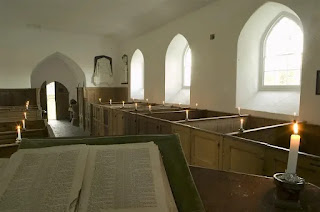All Hallows' Eve: Harvest, the dark season, and the month of the dead

And Is it not enough that every year A richly laden autumn should unfold And shimmer into being leaf by leaf ... All Hallows' Eve and words from Malcolm Guite's poem for Autumn come to mind. Today we bring the season of Harvest Thanksgiving, our yearly rejoicing in "A richly laden autumn," to a close. The pumpkins, nuts, and apples which decorated our churches for the Harvest festival now decorate our homes. Pumpkin soup and apple pie sit on the table. It is one last day of rejoicing in Autumn's bounty and the Harvest season, looking back on weeks when we have delighted in the divine goodness which has, for another year, "graciously given unto us the fruits of the earth in their season". Sky and hills and woods are one, grey and dead. Hard to believe there be daffodils, That green things will happen again. At night houses shine out in cries across fields of floodwater, The cold of wet and wind like the cut of a spade in a bare hand. With All Hallow'...













